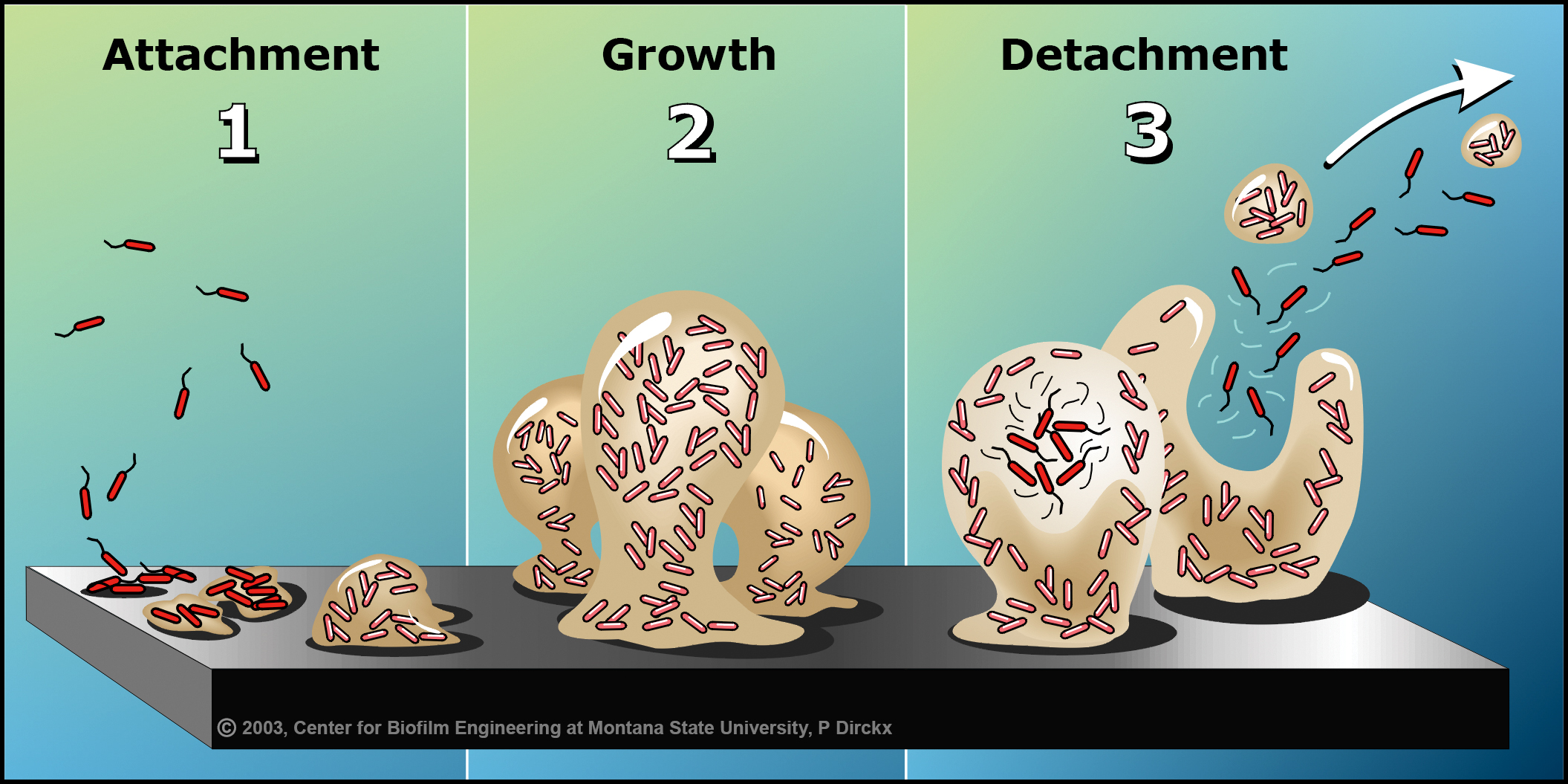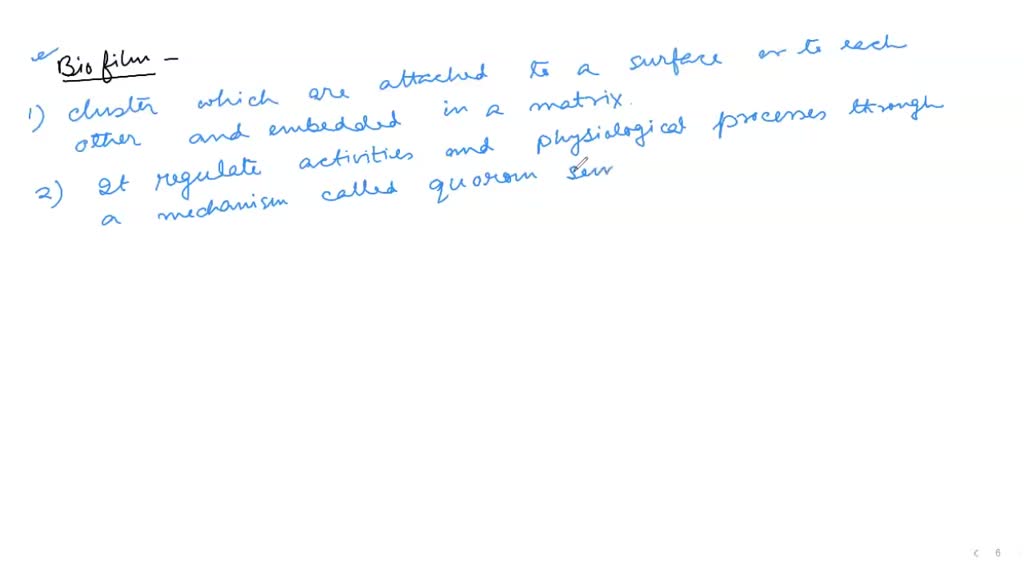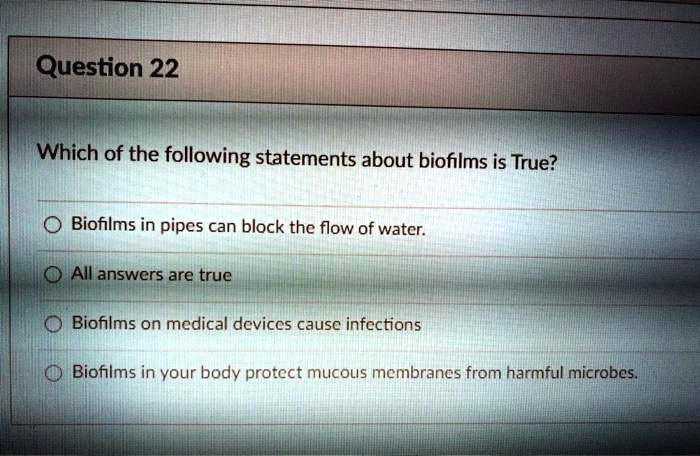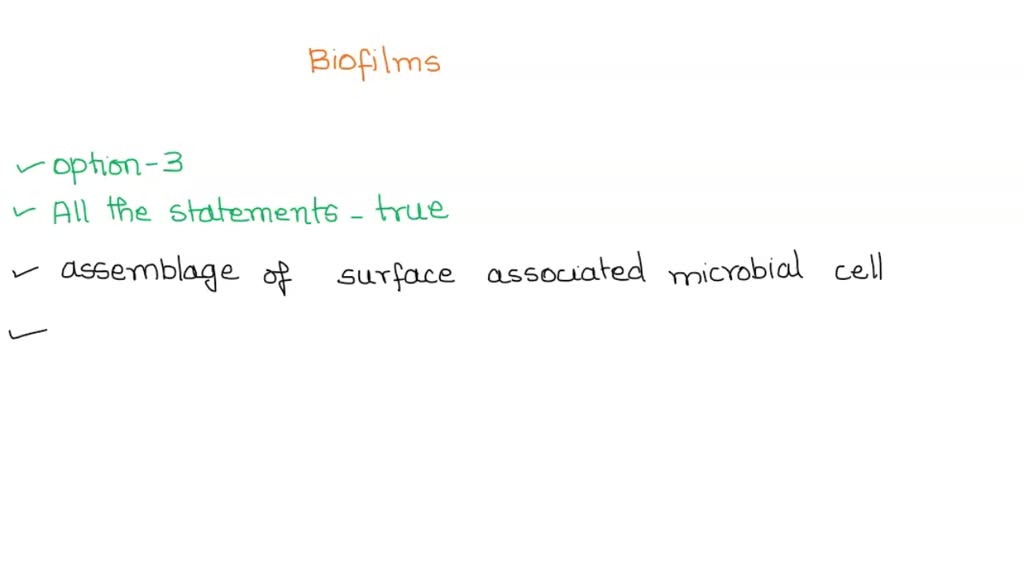Which Of The Following Is Not True Of Biofilms
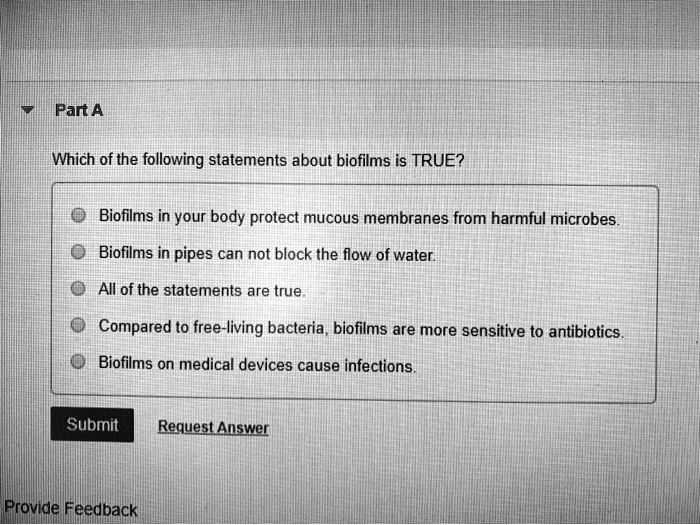
Imagine a world teeming with life, not just the visible flora and fauna, but also a microscopic universe buzzing with activity. These tiny organisms, bacteria, fungi, and even archaea, are not always solitary creatures. They often band together, forming intricate communities encased in a self-produced matrix – a biofilm. They attach to surfaces, building tiny empires of interconnected cells.
Biofilms are ubiquitous, impacting various aspects of our lives, from industrial processes to human health. But misinformation and oversimplifications can muddy our understanding of them. This article aims to clarify the true nature of biofilms by identifying a common misconception: that all biofilms are inherently detrimental. While they can cause problems, they also play essential roles in diverse ecosystems.
The Double-Edged Sword: Biofilms, Good and Bad
Biofilms are complex and multifaceted entities. They are not simply masses of bacteria clinging to a surface. They are structured communities with intricate communication systems and division of labor.
The bad reputation of biofilms often stems from their association with chronic infections. In the medical field, biofilms contribute to persistent infections on medical implants, catheters, and even in wounds. Their matrix protects the residing microorganisms from antibiotics and the host's immune system, making them notoriously difficult to eradicate.
Dental plaque is a prime example of a biofilm. If left unchecked, it can lead to tooth decay and gum disease. These infections showcase the destructive potential of biofilms.
However, viewing biofilms solely as villains overlooks their crucial roles in nature. In fact, many biofilms are beneficial and even essential for life. They are not just about causing decay and disease.
Beneficial Roles of Biofilms
Biofilms play a critical role in nutrient cycling and waste degradation in various ecosystems. In wastewater treatment plants, biofilms are employed to break down organic pollutants, cleaning water before it's released back into the environment.
They contribute to the purification process. They form on filter media, consuming and metabolizing unwanted substances.
In agriculture, certain biofilms can promote plant growth by fixing nitrogen or protecting roots from pathogens. These beneficial biofilms enhance plant health and productivity.
Even within our own bodies, biofilms are not always detrimental. The gut microbiota, a complex community of microorganisms including biofilms, is essential for digestion, immunity, and overall health. These communities contribute to maintaining our well-being.
The Structure and Formation of Biofilms
Understanding how biofilms form and function is crucial for developing effective strategies to control them, both in beneficial and detrimental contexts. The process begins with the attachment of planktonic (free-floating) cells to a surface.
Once attached, these cells start producing an extracellular polymeric substance (EPS) – the matrix that encases and protects the biofilm community. This EPS is a complex mixture of polysaccharides, proteins, nucleic acids, and lipids.
The matrix provides structural support, facilitates nutrient transport, and protects the biofilm from environmental stressors such as desiccation, antibiotics, and disinfectants. The formation of biofilm is facilitated by complex cell signaling.
Within the biofilm, cells communicate with each other through quorum sensing, a process in which bacteria release signaling molecules that regulate gene expression and coordinate behavior. This allows the biofilm to act as a unified entity, responding to changes in the environment and adapting to new challenges.
The architecture of biofilms is far from random. They often contain channels and pores that allow for the circulation of nutrients and the removal of waste products. The diversity of microbial species within a biofilm can also contribute to its resilience and functionality.
Combating Detrimental Biofilms
The resilience of biofilms makes them challenging to eradicate, particularly in medical settings. Traditional antibiotics are often ineffective because they cannot penetrate the matrix or reach the deeper layers of the biofilm.
Researchers are exploring alternative strategies to combat biofilm infections. These include disrupting the EPS matrix, inhibiting quorum sensing, and using antimicrobial peptides or bacteriophages.
Enzymes that degrade the EPS matrix can enhance the penetration of antibiotics and make the biofilm more susceptible to killing. Quorum sensing inhibitors can disrupt the communication between cells, preventing the formation of mature biofilms. Bacteriophages, viruses that infect bacteria, can be used to specifically target and kill bacteria within a biofilm.
In industrial settings, preventing biofilm formation is often the most effective strategy. This can be achieved through surface modification, using antimicrobial coatings, or implementing regular cleaning and disinfection protocols. These strategies contribute to minimizing biofilm presence.
Looking Ahead: The Future of Biofilm Research
Biofilm research is a rapidly evolving field. Scientists are constantly gaining new insights into the structure, function, and behavior of these complex communities. Understanding how biofilms interact with their environment, including the host immune system, is crucial for developing more effective prevention and treatment strategies.
The development of new technologies, such as advanced microscopy and high-throughput screening, is accelerating the pace of discovery. These technologies allow researchers to visualize biofilms in unprecedented detail and to identify novel antimicrobial agents.
As we continue to unravel the mysteries of biofilms, we can expect to see significant advances in our ability to control and manipulate these communities for both beneficial and detrimental purposes. These advances will impact a wide range of fields, from medicine and agriculture to environmental science and engineering.
Conclusion: A Nuanced Perspective
Biofilms are complex and versatile communities of microorganisms that play a crucial role in various ecosystems. While they are often associated with chronic infections and industrial problems, they also contribute to beneficial processes such as nutrient cycling, wastewater treatment, and plant growth.
It is a misconception that all biofilms are inherently detrimental. A nuanced understanding of biofilms is essential for developing effective strategies to manage these communities for both beneficial and detrimental purposes. The future of biofilm research holds great promise for advancing our understanding of these fascinating microbial ecosystems and for harnessing their power for the benefit of society.
Recognizing the multifaceted nature of biofilms allows for a more balanced and effective approach to addressing the challenges and opportunities they present. By shifting our perspective from viewing them solely as adversaries to understanding their intricate roles in the world around us, we can unlock new possibilities for innovation and progress.

![Which Of The Following Is Not True Of Biofilms [ANSWERED] Which of the following is NOT a characteristic of biofilms](https://media.kunduz.com/media/sug-question-candidate/20220521231043560385-4527172.jpg?h=512)
